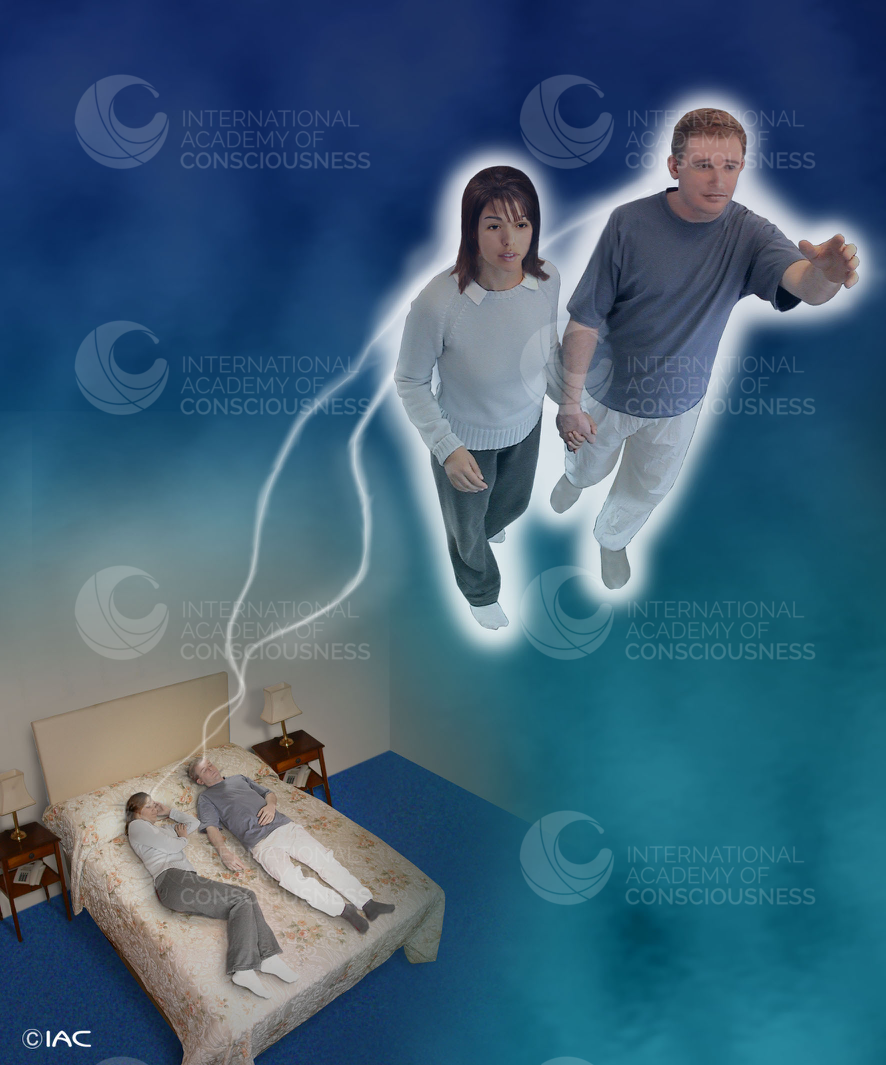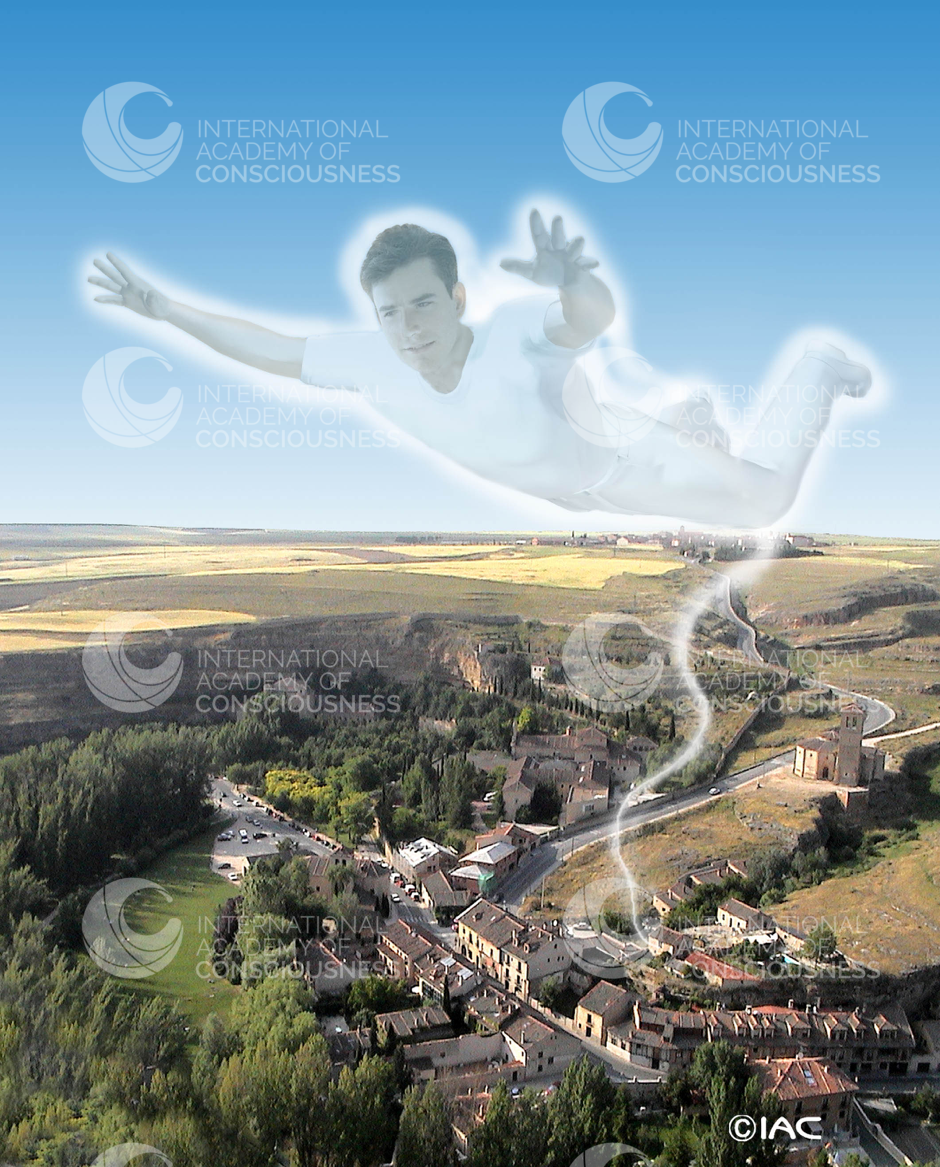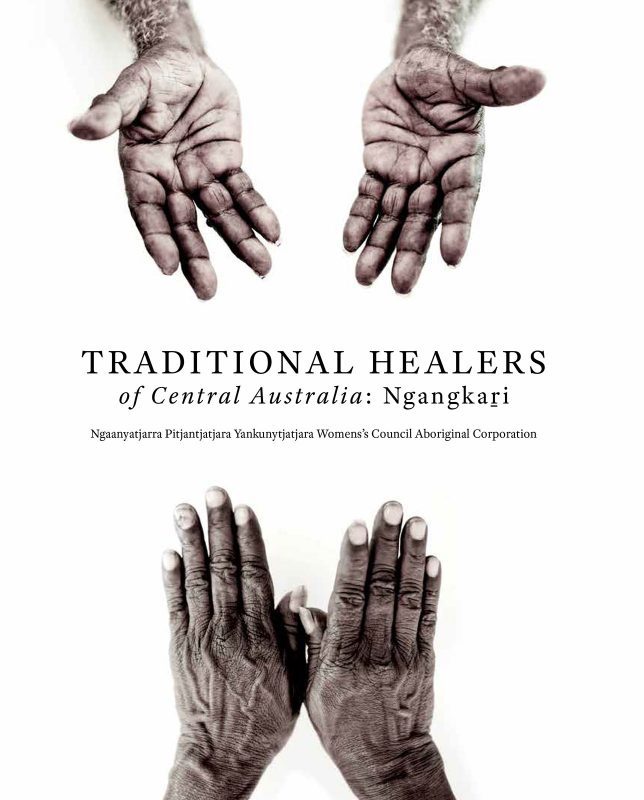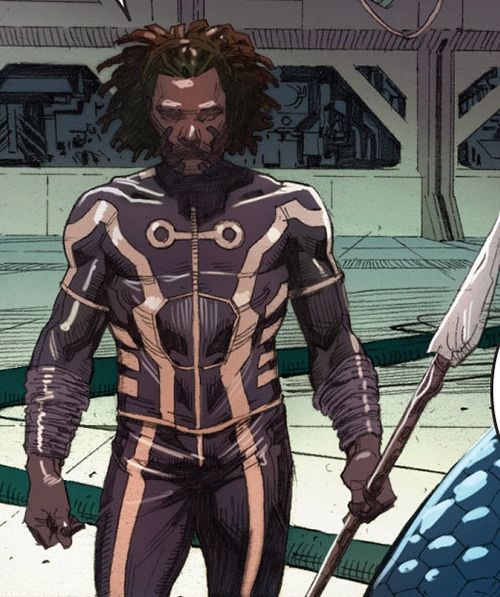|
Given our current technological limits, subtle phenomena such as out-of-body experiences, encounters with non-physical beings or the existence of other dimensions of life are not readily proven in ways that will satisfy skeptics who have not had their own experiential proof. Apart from pursuing our own experiences, for now all we can do is collect, compare and analyse the experiences of those who claim to have travelled beyond the body. Surely consistencies in a substantial body of personal records at some point counts as evidence for the veracity of the accounts. One of the reasons I find corroborating evidence from Aboriginal Australian culture so compelling is that we know that Aboriginal people were largely isolated from other cultures for at least 10,000 years (since the last major ice age), and possibly much longer than that. Accounts by self-proclaimed multidimensional travellers from Europe, Asian and Africa may all have influenced each other, as pieces of the different esoteric religious traditions found across these continents were exchanged over the last two millennia or longer, and subsequently influenced more contemporary modes of spirituality. But Australian Aboriginal people had no such influence. So when their accounts of out-of-body travel corroborate what people from elsewhere in the world are saying, it suggests strongly that these diverse people are describing an objective reality, rather than a fantasy that coincidentally happens to be the same across the world. In this article, I look at one particular and often elusive feature of the out-of-body experience, an energetic link between the physical body and the non-physical body known as the “silver cord” by contemporary OBE researchers. I present evidence relevant to this “silver cord” found in the records of anthropologists who worked with Australian Aboriginal people in the first half of the 20th century. In particular, I draw on the research assembled by A.P. Elkin in his classic Aboriginal Men of High Degree and on an ethnographic account collected by a German anthropologist called Helmut Petri in the Kimberley region of Australia in the 1930s and published in a book called The Australian Medicine Man. Both Petri and Elkin recorded a number of accounts of out-of-body travel, including references to some kind of cord that was used by people to leave their body and travel in the sky. This cord sounds much like the "silver cord". The silver cord is the name given to the subtle energetic connection between our physical body (soma) and the body with which we manifest in non-physical dimensions (psychosoma or astral body). It is one of the more ambiguous features of out-of-body travel, because while some people report seeing it, there are many others who have had lucid out-of-body experiences but have never seen it. Nonetheless, the general consensus in the OBE community is that when we are projected outside of the physical body, the silver cord connects us back to that body. It acts as a kind of conduit of energy and sensory information between the two and, among other things, ensures that we always end up back in our body after an out-of-body experience. When we “die”, the silver cord breaks and our subtle body (psychosoma) loses its connection to the physical body. Robert Monroe and Waldo Vieira were two prolific projectors who both left written accounts of their perceptions of the silver cord. In his classic Journeys out of the Body, Monroe writes the following: I turned to look for the "cord" but it was not visible to me; either it was too dark or not there. Then I reached around my head to see if I could feel it coming out the front, top, or back of my head. As I reached the back of my head, my hand brushed against something and I felt behind me with both hands. Whatever it was extended out from a spot in my back directly between my shoulder blades, as nearly as I can determine, not from the head, as I expected. I felt the base, and it felt exactly like the spread out roots of a tree radiating out from the basic trunk. The roots slanted outward and into my back down as far as the middle of my torso, up to my neck, and into the shoulders on each side. I reached outward, and it formed into a "cord", if you can call a two-inch-thick cable a "cord". It was hanging loosely, and I could feel its texture very definitely. It was body-warm to the touch and seemed to be composed of hundreds (thousands?) of tendon-like strands packed neatly together, but not twisted or spiralled. It was flexible, and seemed to have no skin covering. Satisfied that it did exist, I took off and went. (p.175) Vieira provides an account with some parallels and some subtle differences in his Projections of the Consciousness: A diary of Out-of-Body Experiences. After having examined his own psychosoma closely during a projection, Vieira writes: To conclude the "physical" inspection of the psychosoma, I raised the right hand to my back, head and neck, and once again very closely examined the "skin" of the neck region and the silver cord. It again impressed me as being a combination of tiny, loose cords or fine, occasionally sparkling elastic strings, firmly attached to the psychosoma. The silver cord exhibits warmth, flexibility and the texture of human tissue. It has a structure and nature closer to that of the psychosoma than to that of the soma. The energetic filament does not seem to stop at the skin. it gives the impression of entering the soma and establishing a deep connection with one or more vital centres. Could one of them be the pineal gland? How can such an apparently fragile structure have such a powerful flow of energy? While I deeply pondered the fact, as if engaged in an internal monologue, I held the silver cord close to the soma and activated the return system by pulling on this appendage. In seconds, I was consciously diving into the physical body. (p.86-87) The images below (courtesy of the International Academy of Consciousness) give you a sense of how the silver cord connects the physical body to the non-physical body (psychosoma). When we are close to the body, it is said to be quite thick and have a substantial pull, making it one of the obstacles of us leaving the body with full awareness. As we move further away it becomes very thin. Seemingly there is no limit to its stretch and reach as we project around the world, to other planets and other dimensions. In Aboriginal Australia, the ability to leave the physical body consciously is usually grouped with other psychic abilities, such as clairvoyance, the ability to communicate with and influence non-physical beings and the ability to manipulate energies. Only some people develop these abilities and such people are often referred to as “clever” (see my blog piece on the use these clever men and women make of out of body travel). Clever people, men or women, are usually “made” through processes of initiation involving a range of spirit beings. In other words, there are culturally acknowledged steps by which a person comes to develop these psychic abilities. In their respective books, both Elkin and Petri draw on their own field work from the 1930s and ‘40s, and survey earlier accounts from other researchers of the way clever people were made across Australia. When reading these accounts, it is important to be mindful of a number of factors likely to have impacted the way they were recorded: basic linguistic issues, i.e. the English language proficiency of the Aboriginal informants and the Aboriginal language proficiency of the anthropologists; the anthropologists’ ideas about reality and how that may have influenced how they heard their informants; the Aboriginal ideas of reality and how that lead them to express themselves, for example it has been my experience that Aboriginal people do not necessarily make an explicit distinction between the categories of physical and non-physical as most Europeans do, because they do not experience the two as separate. I think it likely that all these factors played into the record of the following account documented by Elkin from New South Wales: During their making in south-east Australia, a magic cord is slung into the doctors. This cord becomes a means of performing marvellous feats, such as sending fire from the medicine man's insides, like an electric wire. But even more interesting is the use made of the cord to travel up to the sky or to the tops of trees through space. At the display during initiation - a time of ceremonial excitement - the doctor lies on his back under a tree, sends his cord up, and climbs up it to a nest on top of the tree, then across to other trees, and at sunset, down to the ground again. Only men saw this performance, and it is preceded and followed by the swinging off the bull-roarers and other expressions of emotional excitement. In the descriptions of these performances recorded by R.M. Berndt and myself, the names of the doctors are given and such details as the following: Joe Dagan, a Wongaibon clever man, lying on his back at the foot of a tree, sent his cord directly up, and "climbed" up with his head well back, body outstretched, legs apart, and arms to his sides. Arriving at the top, 12 meters up, he waved his arms to those below, then came down in the same manner, and while still on his back the cord re-entered his body. Apparently, in this case, his body floated up and down in the horizontal position with no movement of his hands or legs, and the explanation must be sought in group suggestion of a powerful nature. (Elkin 1977 p.54-55) For someone who has studied the projection of consciousness and other psychic phenomena this account can be interpreted in ways that are unlikely to have occurred to Elkin. For example, from such studies we know that the silver cord is closely related to the energetic body (energosoma, pranic body), which is constituted of the subtle energy also known as Chi/Qui. When this energy is highly developed, it is often experienced as “fire” or electricity, leading to intense heat within the person’s body which can also be externalised to others.
Elkin seems to have interpreted the account of the person travelling up to the trees on the cord as if it was the person’s physical body that flew up to the top of the trees and then returned. However, it seems much more plausible and from a multidimensional perspective perfectly logical, that it was in fact the non-physical body (psychosoma, astral body) that flew up to the top of the tree while the physical body would have remained prone on the ground with the silver cord connecting the two. From that perspective, the doctor was showing off his skill of lucidly leaving his body, while the audience was able to see both the silver cord and the psychosoma; this was the fascinating bit and the part Elkin’s informant focused on in relating the event, without making explicit the distinction between physical and non-physical. This seems especially plausible to me, as I have never seen my own silver cord, but when running OBE workshops have seen other people’s silver cords and psychsomas as they projected and therefore have a sense of what that might look like. Later in his work, Elkin discusses that some of the seeming variation in the making and practices of doctors (or clever people) may actually be the result of incomplete data. Speaking about the “magic cord” he explains that, … up to 1944, their use of cords, aerial rope, was reported only from Victoria and inland New South Wales, but since then I have recorded it from the north coast of the latter state, for the Gladstone and Cloncurry districts, respectively in coastal and far inland Queensland, and in this chapter for Dampier Land, southwest Kimberley, Western Australia. Possibly, it was also a psychic phenomenon displayed by members of the craft in tribes in between. (Elkin 1977 p.180) In other words, this “magic cord” was reported from people across Aboriginal Australia as involved in people’s ability to fly. An even clearer account of the silver cord in Aboriginal culture comes from Helmut Petri, a German anthropologist who first conducted fieldwork in the Kimberley region of Australia in 1938. Like Elkin he was interested in the social role and asserted abilities of the clever people, who he called medicine men. One of their abilities that he documented was to go on “dream journeys”: During the dream journey the ya-yari roaming in the distance remains connected to the body by the thin, fine thread, and when it returns it is accompanied by the agula to just outside the doctor's camp. (Petri 2015 p.13) In the language of the Unambal with whom Petri was working, the ya-yari is the psychosoma or non-physical body of a living person, while the agula is a deceased person. This suggests that what Petri here calls “dream journey” is really a visit to a non-physical dimension where the person who is projected during sleep meets deceased people, who in this case accompany him back to his body. In analysing the differences and parallels of two kinds of “doctors” (ban-man, who are the classic doctors of the Unambal people, and “devil-doctors” who are a new kind of doctor who emerged since colonization through the introduction of new ceremonies), Petri again refers to the cord: The Devil Doctor has in common with the genuine ban-man the gift of miriru, i.e. he can work himself into states of trance or vision and visit the realm of the spirits. He too releases his ya-yari from his body. The ya-yari then is said to go up a tree and travel along a thin, fine thread to the distant island of the dead, Dulugun, or into the celestial beyond on the other side of the Milky Way. Some agula will escort him and see to it that he returns safely again to this world. (Petri 2015 p.26) The agula, or extraphysical consciousnesses mentioned here appear to be helpers, assisting the doctor in his projection. It seems clear from these brief accounts that the Unambal people knew of the silver cord that connects the psychosoma and the body. Like Elkin, Petri also surveyed the literature relating to other parts of Australia and reproduced several other references to cords associated with extracorporeal travels. There is a reference to the Mara tribe from the Gulf of Carpentaria, whose doctors “go on journeys to the sky. At night time and invisible to everybody, they will climb up into the sky on a rope in order to hold converse there with the people of the star world. (Petri 2015 p.104). And writing of the Kurnai people from New South Wales he said that Kurnai belief that doctors ascend to sky by aid of a rope and that their neighbours shared their beliefs that their doctors "climbed into the sky on threads, as thin as blades of grass " (Petri 2015:113). In summary, it is in my view clear that Aboriginal people from across Australia have known about the energetic connection, the “silver cord”, between the physical body and our subtle body for thousands of years. This is important data, because Aboriginal culture has not received influences from other cultures for a very long time. As such the fact that Aboriginal people describe this connection in ways very similar to the accounts of more contemporary European researchers supports the objective reality of this energetic “body part”, or perhaps better “para-body part”. There seems to be, however, a cultural difference in the emphasis given to the cord. In the European esoteric traditions, the silver cord is emphasised as the connection that ensures our return to the physical body, whereas in the account collected from Aboriginal people the emphasis seems to be on it as a tool or mechanism that allows exploration away from the body. Given the many other cultural differences, this is hardly surprising.
6 Comments
9/3/2017 Spiritual Guidance by a Deceased Father - a personal account of an out-of-body experienceRead NowIntroduction |
Details
AuthorKim McCaul is an anthropologist with a long term interest in understanding consciousness and personal transformation.
About this blogThis blog is about my interests in consciousness, energy, evolution and personal growth. My understanding of consciousness is strongly influenced by the discipline of conscientiology and I have a deep interest in exploring the relationship between culture and consciousness.
Have some inputI am often inspired by comments and questions from other people, so if there is something that interests you drop me a line and I will see if I can write something about the topic.
Support my workIf you enjoy something you read here consider supporting my work in this field by purchasing my book, which is available on any major online book store. It's a win-win as you will get a mind expanding read and I will feel the support and encouragement to write other mind expanding books. If you have read my book and enjoyed it please consider leaving a review of it on Amazon to help others find it. I am a great believer in creating community in the online space and sharing our passion for understanding consciousness is an excellent way of doing that.
Archives
November 2020
Categories
All
|



